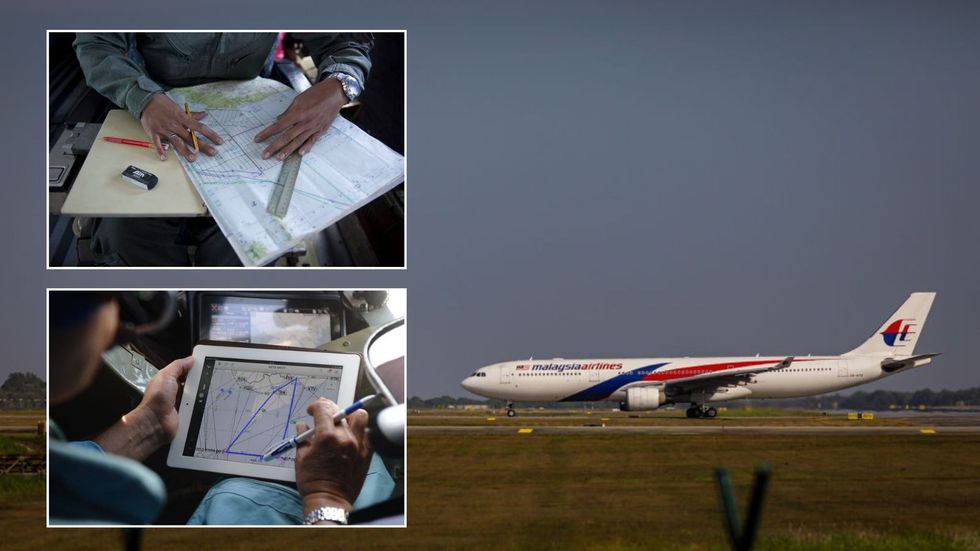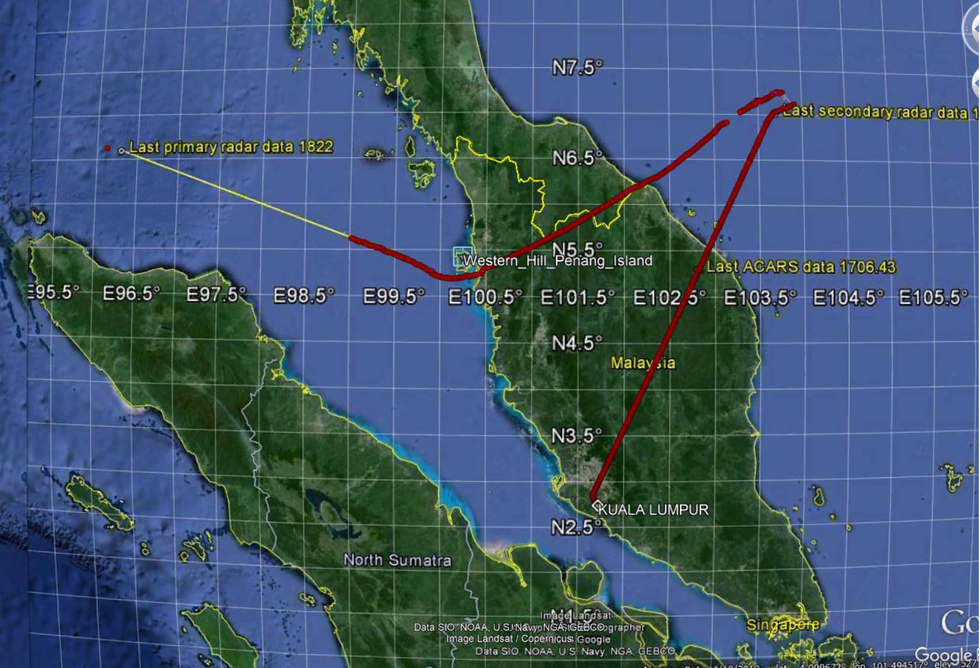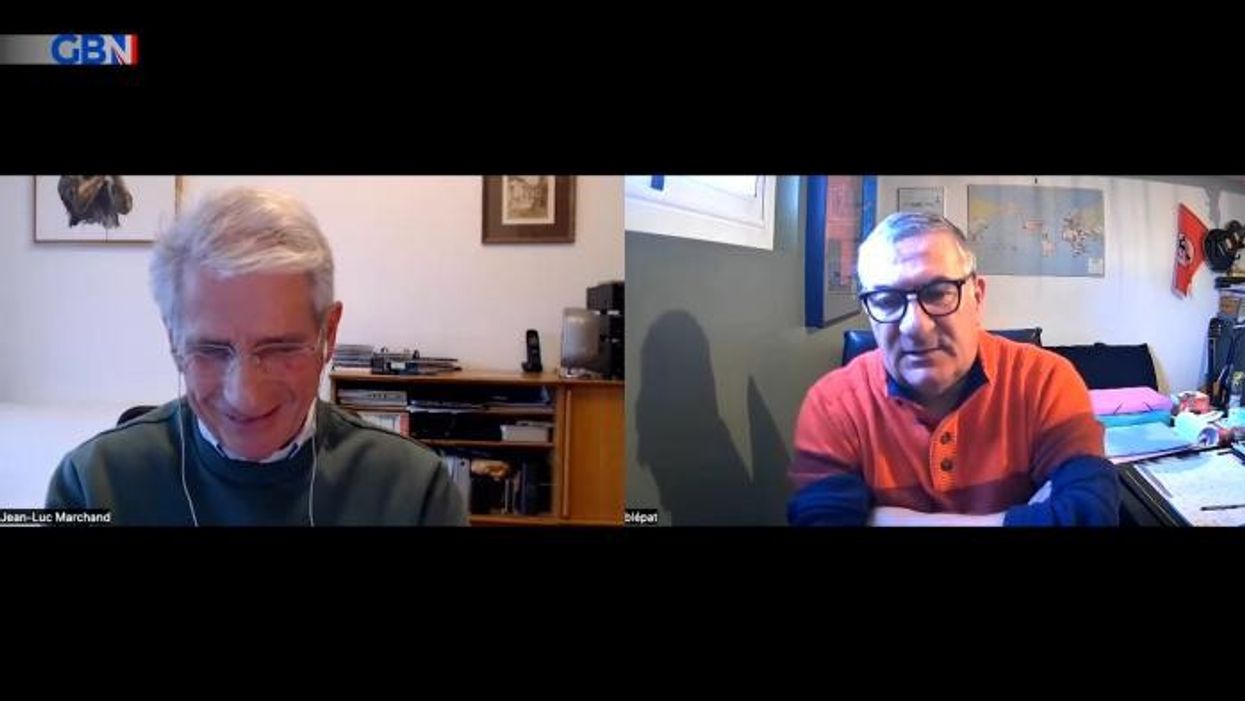Investigators are one step closer to piecing together what happened to flight MH370
Don't Miss
Most Read
Trending on GB News
New data has unveiled two important revelations in the case of a missing Malaysian Airlines flight which vanished in 2014.
Investigators are one step closer to piecing together what happened to the doomed plane as new radar analysis supports two major conclusions.
Aerospace expert Jean-Luc Marchand and pilot Captain Patrick Blelly have concluded that the missing flight - carrying 227 passengers and 12 crew members - was piloted manually by an "experienced qualified person".
Data analysed by the retired Programme Manager on Air Traffic Management and former A330/A340 Captain also found that the flight likely climbed to 30,000 or 32,000ft before an "emergency descent" was performed after the aircraft was depressurised.

New data has unveiled two important revelations in the case of a missing Malaysian Airlines flight which vanished in 2014
Getty
The latest data comes a month after US marine robotics company Ocean Infinity announced a proposal for a new search in the south Indian Ocean where the plane is believed to have crashed 10 years ago.
Marchand and Blelly's latest MH370 study complies both aeronautical, technical and operational perspectives and concludes that the plane’s transponder was turned off and the aircraft made a U-turn away from the flight path.
The team believes it is likely the aircraft was then intentionally ditched.
The new, original data based on Malaysian military radars and published by Geoscience Australia has been analysed for the first time and now confirms important aspects of the flight between the diversion at IGARI (the final checkpoint within Malaysian airspace) and the end of the radar coverage at 18.22.
The two latest revelations supports Marchand and Blelly hypothesis.
In their report, the investigators said: "From take-off to IGARI, the aircraft demonstrated an excellent capability to fly a geometrically perfect trajectory controlled by the Auto Pilot function.
"The precision is remarkable. After IGARI, no such precision is visible. Even considering radar measurement errors, the trajectory presents the characteristics of a manually piloted flight.
LATEST DEVELOPMENTS:
"In particular, the reconstructed U-Turn simulated a year before recovering this new data matches the data perfectly.
"Thanks to this data, the U-Turn radius is now known numerically. It demonstrates that the U-turn could not be performed other than manually."
The duo's latest trajectory of the plane suggests the flight rerouted at IGARI - located one-third of the way from the Malaysian coast to Vietnam - as it manually flew over Malaysia until Penang Island where the copilot’s mobile phone was detected.
While still manually piloted, it headed to the north of Sumatra, when it disappeared from the radar surveillance before turning southwest between Sumatra and the Andaman Islands.
As the flight reached between 30,000 or 32,000ft, Marchand and Blelly believe the plane then made an "emergency descent" likely simulated after depressurising the aircraft.

Jean-Luc Marchand and Captain Patrick Blelly have investigated the trajectory of the MH370 using the radars from Kuala Lumpur until the exit from the radar coverage at 18.22
Digital data behind ATSB 'MH370 path' from take-off from Kuala Lumpur until exiting radar coverage at 18h22 UTC Version 1.0 – 10th April 2024 Jean-Luc Marchand, MSc, trise5631 & Captain Patrick Blelly
The investigators said: "After the flame-out of the right engine, the left engine was voluntarily, manually shut down leading to a controlled glide and a controlled ditching.
"The aircraft has been always piloted by an experienced qualified person.
The report concludes: "The first major hypothesis made in this study is to consider that the person in command went for a fatal journey of no return. The hypothesis of a technical failure has been proven to be unlikely."
Marchand told GB News: “The aircraft followed the path of a sad journey with an experimented pilot who took over the aircraft and had a well thought plan to stay as much invisible as possible and ending finally in the southeast of the Indian Ocean.
“And the indications, it's most probably with the final ditching, leaving very few debris again not to be found after the hijacking and the re-routing.
“So basically, the study of all the details and the evidences left by the aircraft showed that it followed a very well thought in advanced plan and clearly with a lot of success.”









